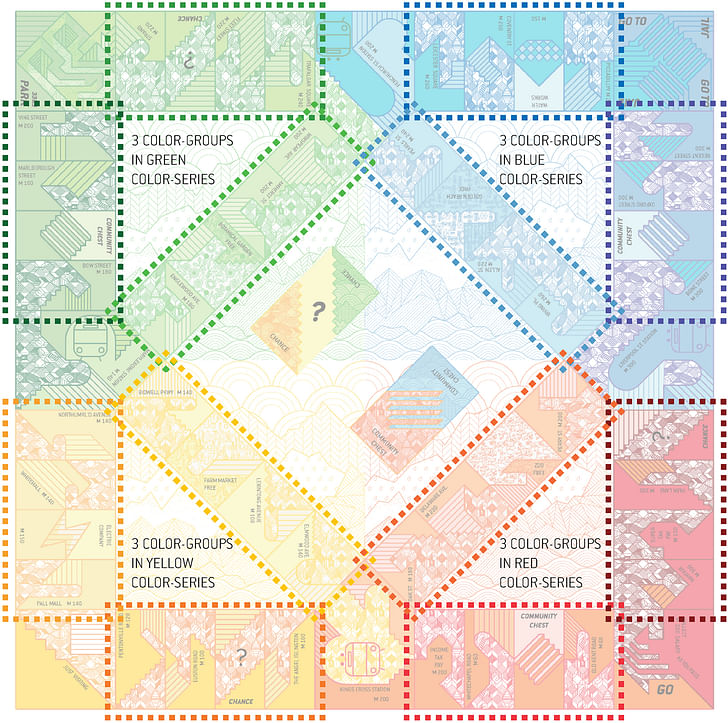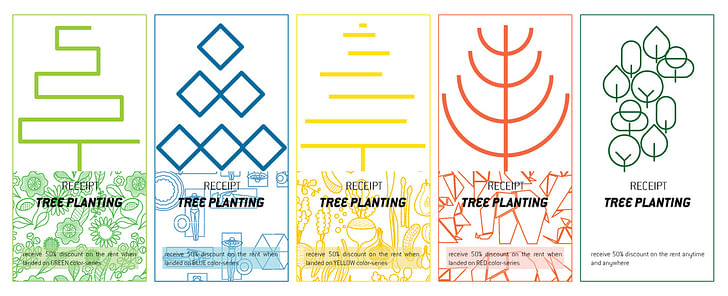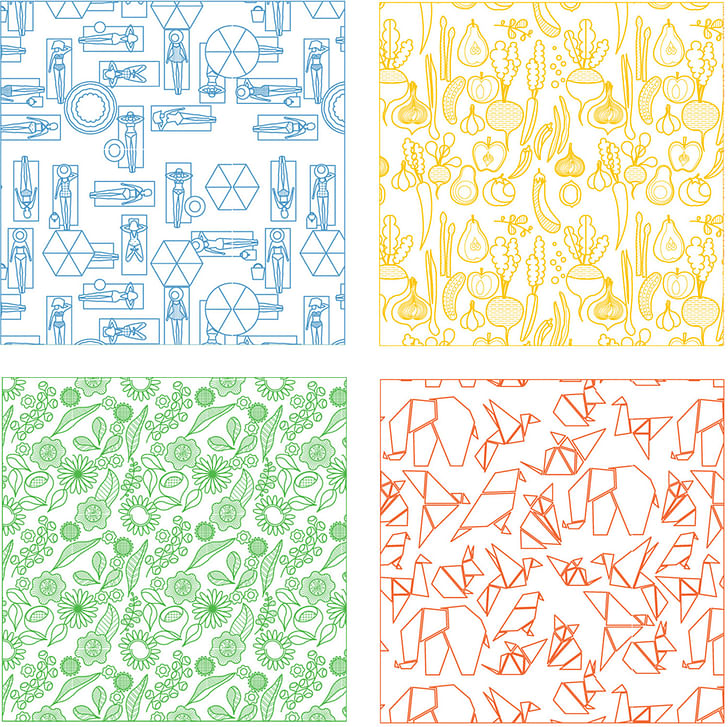

When the Parker Brothers' version of the game Monopoly was released in 1935, it was primarily a celebration of capitalism; players were encouraged to build as much high-priced real estate as they could by acquiring desirable tracts of land and then forcibly renting them out to unlucky arrivals. The goal was to bankrupt the other players, all the while dodging the slings and arrows of the often financially ruinous 'Chance' cards.
As part of our August call for 'Games' submissions, Archinect asked for custom-designed versions of Monopoly centering around the architecturally-related forces that can shape contemporary urbanity. This submission by Jia Ma, styled as a kind of ecologically-conscious Monopoly, is won by creating a sustainable community, not a bankrupt one. Landlords aren't encouraged to gouge their tenants, but rather to create reasonably tiered pricing structures based on property types and their ecological amenities. As a result, properties near public transit have a higher value, and owners are encouraged to build structures that are in harmony with nature. In her own words below, Jia describes the rules, reasoning, and design of her game 'ECO-MONOPOLY.'

The idea of the new designed game board is inspired by some ecological development principles. The most impact on the environment from a building was created during the transportation of people to and from that building over time. Housing the building within proximity of diverse uses is a way to reduce the amount of vehicle distance. the intents of property development with diverse uses are to reduce greenhouse gas emissions Therefore, the intents of property development with diverse uses are to reduce greenhouse gas emissions, as well as the incidence of obesity, heart disease, and hypertension, by encouraging daily physical activity associated with walking and bicycling. Meanwhile, a well-developed community with diverse uses will bring people convenience, and increase the value of the property. Public transportation is another efficient way to reduce environmental impact. The value of the properties adjacent to the stations is higher than the others.

Uses of a building on an owned property are no longer limited to houses and hotels. By erecting different uses of buildings on a property, the players have more choices to raise the rent. At the same time, the players should balance the benefits, and take investment risks carefully. There are four color-series on the game board and each contains three different color-groups. Like a community, every piece of property supports each other, and share benefit.


There are five public areas (park, zoo, beach, botanical garden, and farmers market) which are free for players to stay. When a player lands on a public area, that player may buy trees from the bank and plant in the area, and keep the receipt. The player will receive a 50% discount on the rent when they land on other players’ property which corresponds to the same color-series as where the trees were planted. Each receipt is valid once. When they land on the park and chose to plant trees, the player may receive a receipt which can be used anytime and anywhere.We should always keep balance between profit, people, and our planet.
On the new game board, all properties are linked by a continuous line combined with steps and slopes, doors and roofs; light and shadow. The player may feel familiar like walking around a street, a block, or a city. The properties riff on abstract illustrations of urban areas. Including sky, sea, mountains, forests, desert, farmland, snow, and rain, the abstract pattern filled on the rest of game board represents the beauty of nature. Meanwhile, it warns us that the built environment is the single largest contributor to environmental impact. We should always keep balance between profit, people, and our planet.

This project was submitted to Archinect's open call for Games, our special editorial theme for August 2016. For related pieces, click here.
Julia Ingalls is primarily an essayist. Her work has appeared or is forthcoming in Slate, Salon, Dwell, Guernica, The LA Weekly, The Nervous Breakdown, Forth, Trop, and 89.9 KCRW. She's into it.
1 Comment
Can Anyone purchase this? this is amazing
Block this user
Are you sure you want to block this user and hide all related comments throughout the site?
Archinect
This is your first comment on Archinect. Your comment will be visible once approved.